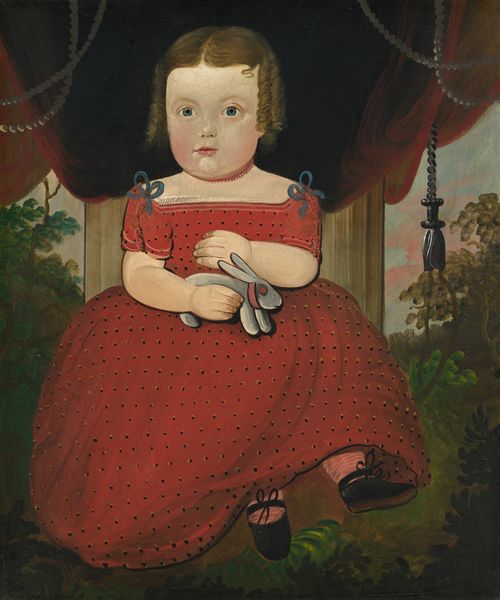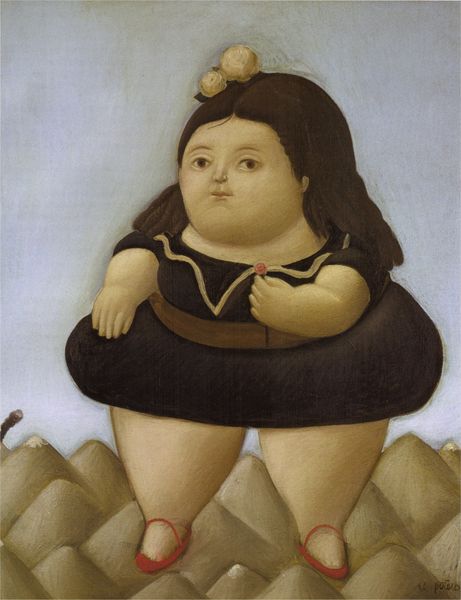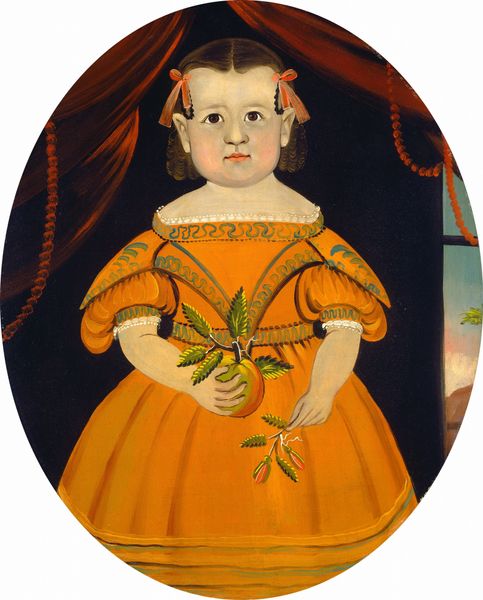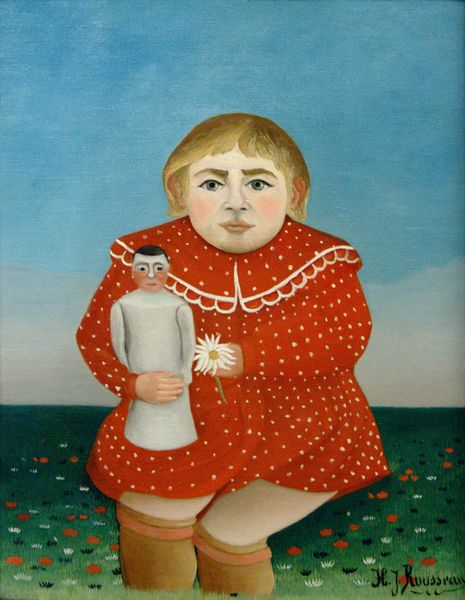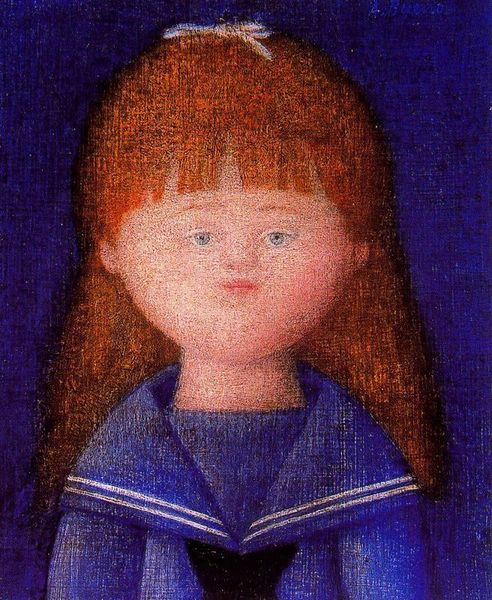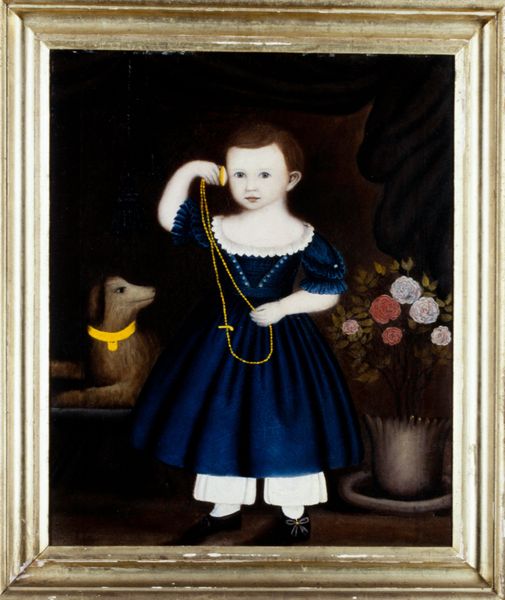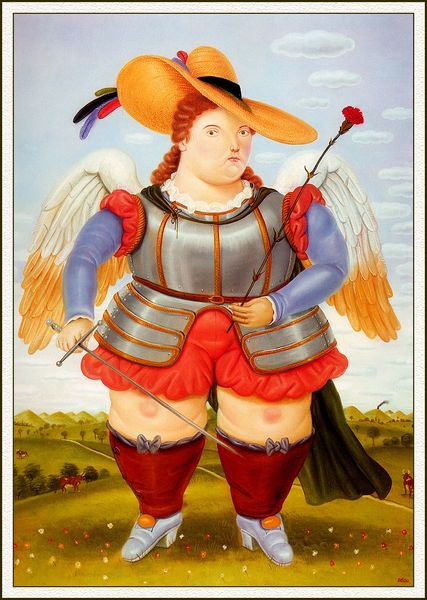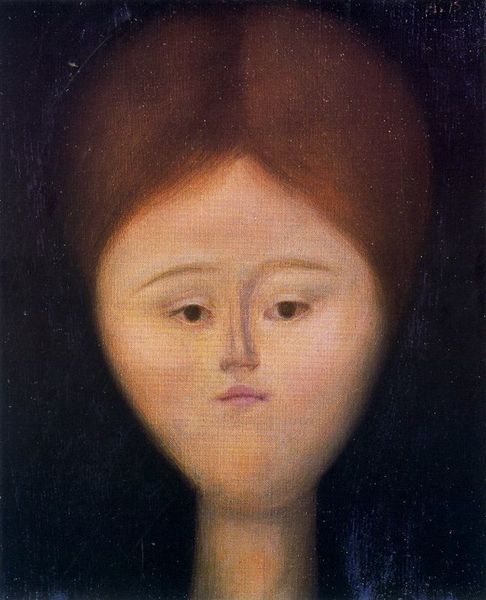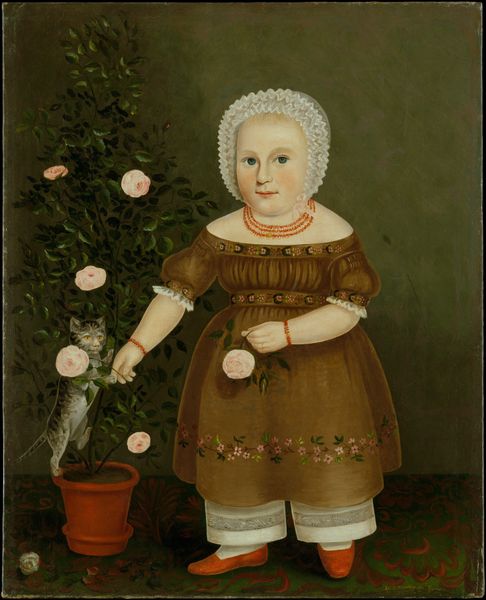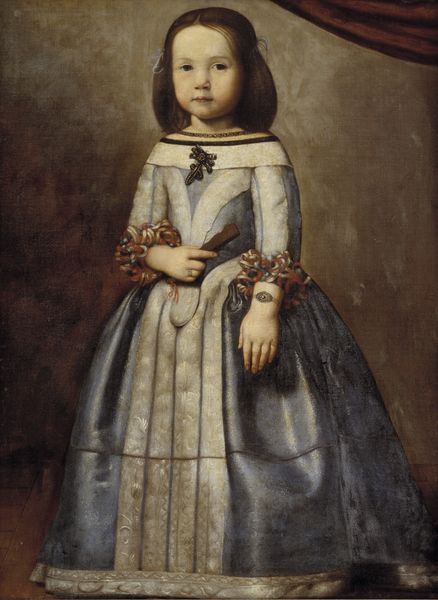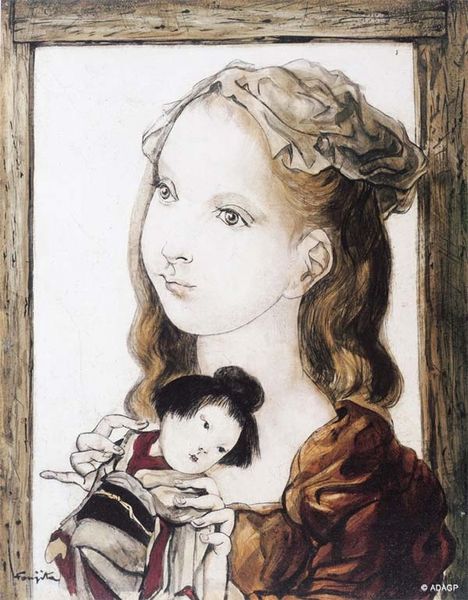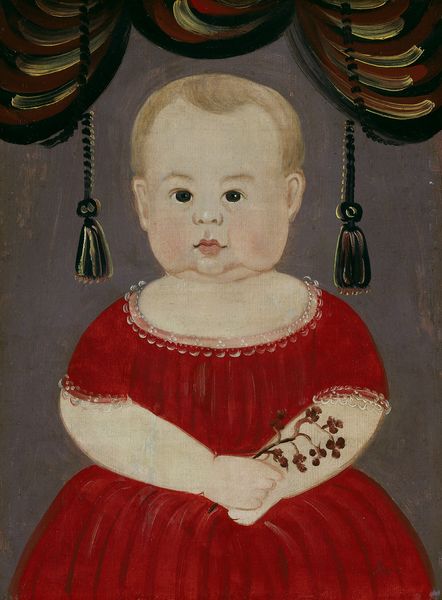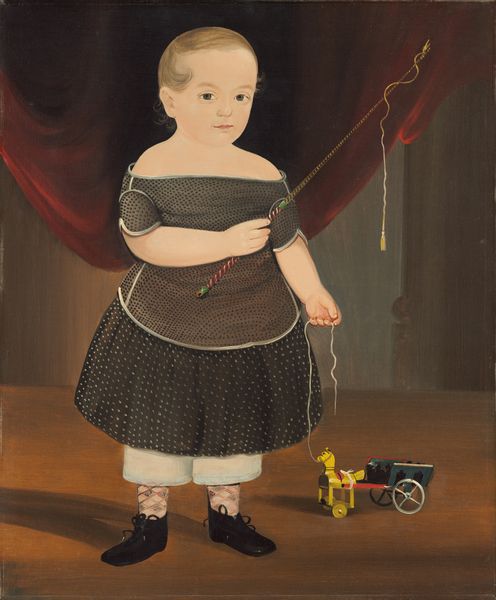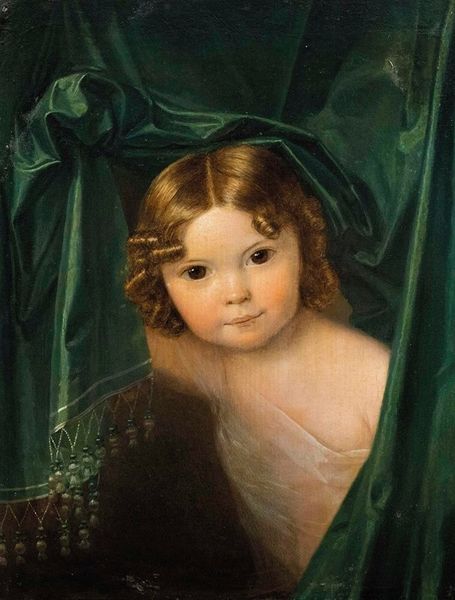
painting, oil-paint
#
portrait
#
contemporary
#
portrait
#
painting
#
oil-paint
#
figuration
#
child
#
academic-art
Copyright: Fernando Botero,Fair Use
Curator: Let's examine Fernando Botero's "Menina (After Velazquez)," a contemporary oil on canvas. Editor: Right off the bat, this portrait's got a strange, dreamlike vibe, wouldn't you say? Like someone inflated a Renaissance painting with a bicycle pump. Curator: Precisely. Botero adopts Velázquez's iconic subject but transmutes it through his signature style. Note the inflated volumes, the smooth, almost surreal surface finish. Editor: It’s fascinating. Her dress looks stiff as cardboard yet strangely plush. The palette is very subdued: creams, blonds and black lines against a pitch-black background makes her stand out more. Her little flower accessory feels very dated. Curator: Observe how the artist minimizes sharp lines, favoring rounded contours. The treatment of light is also crucial. Instead of dramatic chiaroscuro, Botero employs soft, diffused light. This technique flattens the form. Editor: The lack of shadows is unusual but striking. Without depth, her eyes are just a couple of dark spots and the face itself loses any true emotional depth. Do you feel it is mocking historical styles? Curator: One could argue that Botero's deformation functions as a critique of conventional beauty standards. The deliberate exaggeration and re-rendering, I find to be his personal signature. Editor: I get the flattening effect and the rounded shapes, I wonder if Botero thought he was 'perfecting' beauty instead. Her pursed lips and blank stare suggest, that maybe, this little 'infanta' knows a bit too much. Curator: I interpret it less as cynicism and more as an exploration of form itself. By exaggerating and distorting familiar shapes, Botero invites us to reconsider the act of seeing and to appreciate the purely aesthetic qualities of volume and form. Editor: True, it certainly encourages a closer look, and there's undeniable skill in rendering that porcelain skin so vividly. It does prompt a dialogue with art history and, crucially, with our own preconceived notions of what constitutes beauty in art. I think both approaches co-exist here. Curator: Indeed. This conversation reinforces that Botero, while seemingly straightforward, engages in profound reflections about representation itself. Editor: Absolutely, and that he achieves with a very disarming charm, it's not all semiotics or heavy deconstruction; he brings back the idea of 'fun'. I appreciate how the work refuses to sit comfortably, making it memorable long after viewing.
Comments
No comments
Be the first to comment and join the conversation on the ultimate creative platform.
